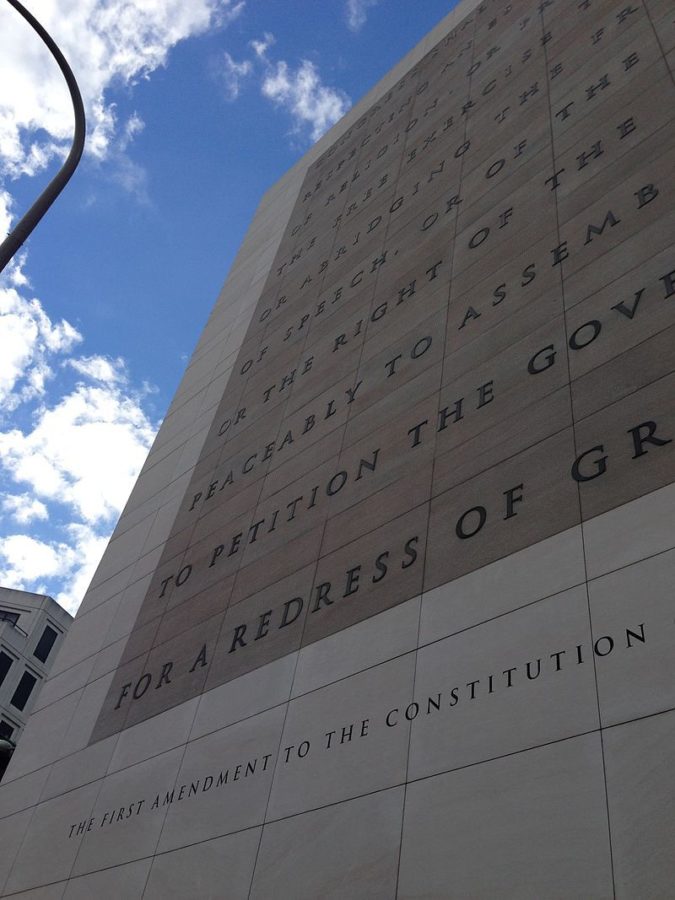Lecturers speak on the importance of the First Amendment in the civil rights movement
The five freedoms of the First Amendment include speech, assembly, religion, petition and the press.
April 12, 2021
To kick off Iowa State’s annual First Amendment Days celebration, guest speakers Gene Policinski and Robert Bickel gave a lecture on how the First Amendment affected the civil rights movement and what it means for social activism today.
The two are co-authors of “The First Amendment and the Civil Rights Movement,” a free online course that addresses the topics they discussed in their lecture. Their thesis was that the First Amendment and the exercise of its five rights by activists and journalists played a crucial role in the success of the civil rights movement.
Throughout the lecture, Policinski and Bickel both referenced two key ideas: without the First Amendment, the civil rights movement would be like a bird without wings, and that without lawyers, a bird without a voice.
The first portion of the lecture consisted of Policinski and Bickel going over pivotal moments in the civil rights movement and explaining how each part of the First Amendment assisted the cause. Bickel said the Montgomery Bus Boycott of 1956 was when the civil rights movement truly began and it revitalized the freedoms of assembly and religion.
“The Montgomery Bus Boycott reawakened both assembly and religion, the mass meetings were all in Black churches so we can add the religion clause. Don’t forget, it’s all five freedoms of the First Amendment that make the movement successful,” Bickel said.
Bickel also discussed at length the events of Bloody Sunday and the Williams v. Wallace case. Bloody Sunday describes the events of the mass protest march on March 7, 1965, led by John Lewis that was met with violent opposition from police. Williams v. Wallace was one of the many cases surrounding the events.
“Williams versus Wallace becomes the greatest First Amendment case ever written because it speaks to assembly in the context of Frank Johnson (the judge) having to prove a multi-thousand person, 52-mile march from Selma to Montgomery. Mass assembly and protest doesn’t get any bigger than that,” Bickel said.
Bickel also said the emergence of television and journalism was crucial to winning that case because Johnson was able to rule on direct evidence of the events of the march. He said the ability for people to see the violence on film “electrified” Americans and helped grow the movement.
Policinski discussed the First Amendment’s role in social change applied to the Black Lives Matter (BLM) movement and other present-day causes.
Policinski also mentioned several challenges movements like BLM face such as protest laws in many states that limit the rights of the First Amendment. His advice to current activists would be to start utilizing their voices in the legal systems to take the progress made and turn it into real legislation that can create lasting change.
“I think it’s very important that journalists go into these future events with the idea that journalists should not be portrayed as representing some elite. Journalists are there on behalf of the public. The movement recognized that and encouraged journalists to be that. We would like to encourage you to be that,” Policinski said.







